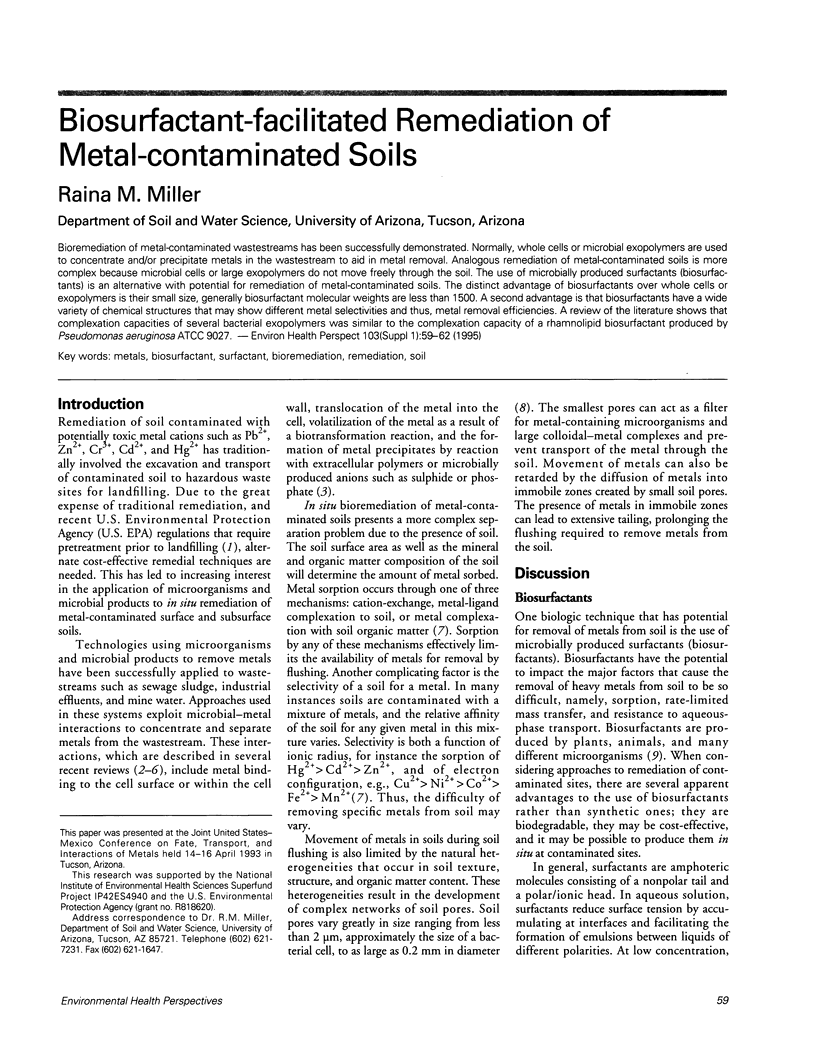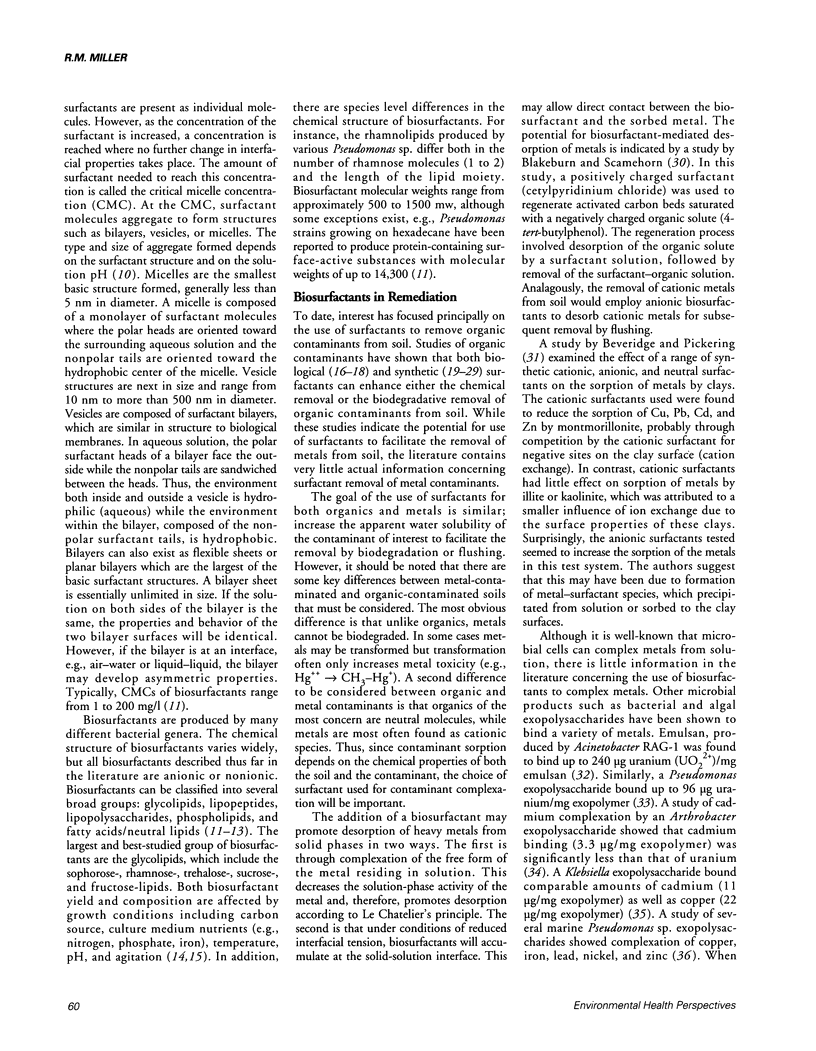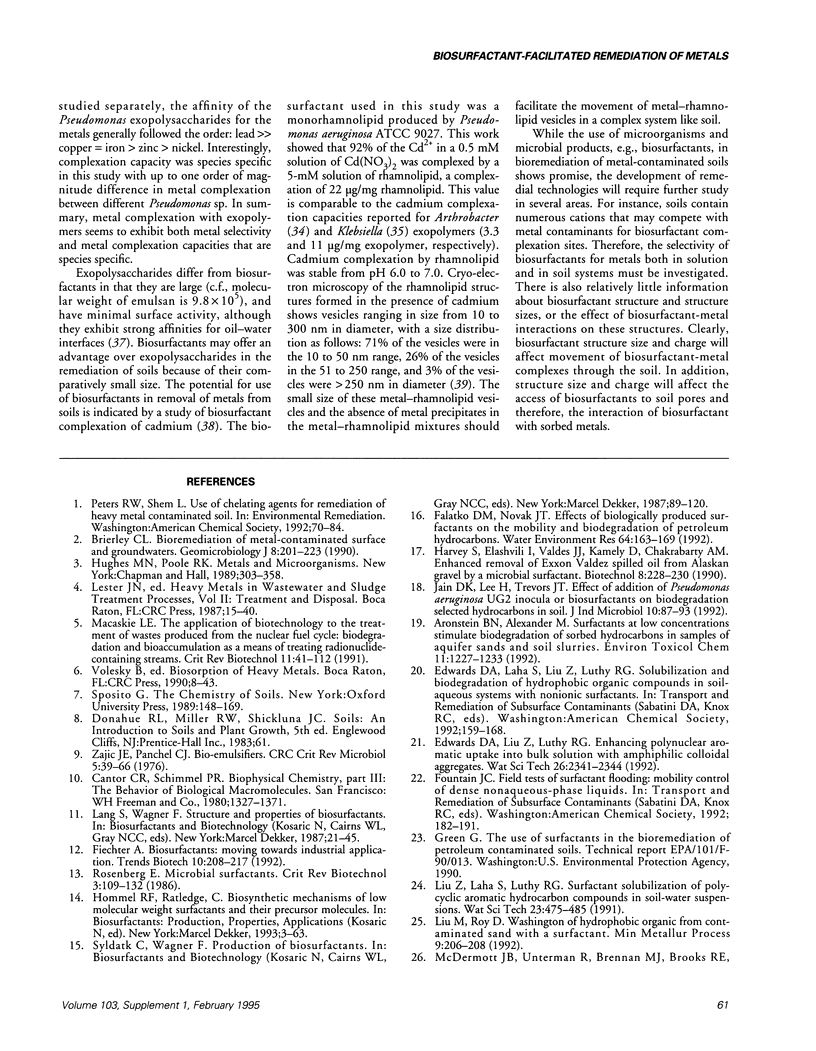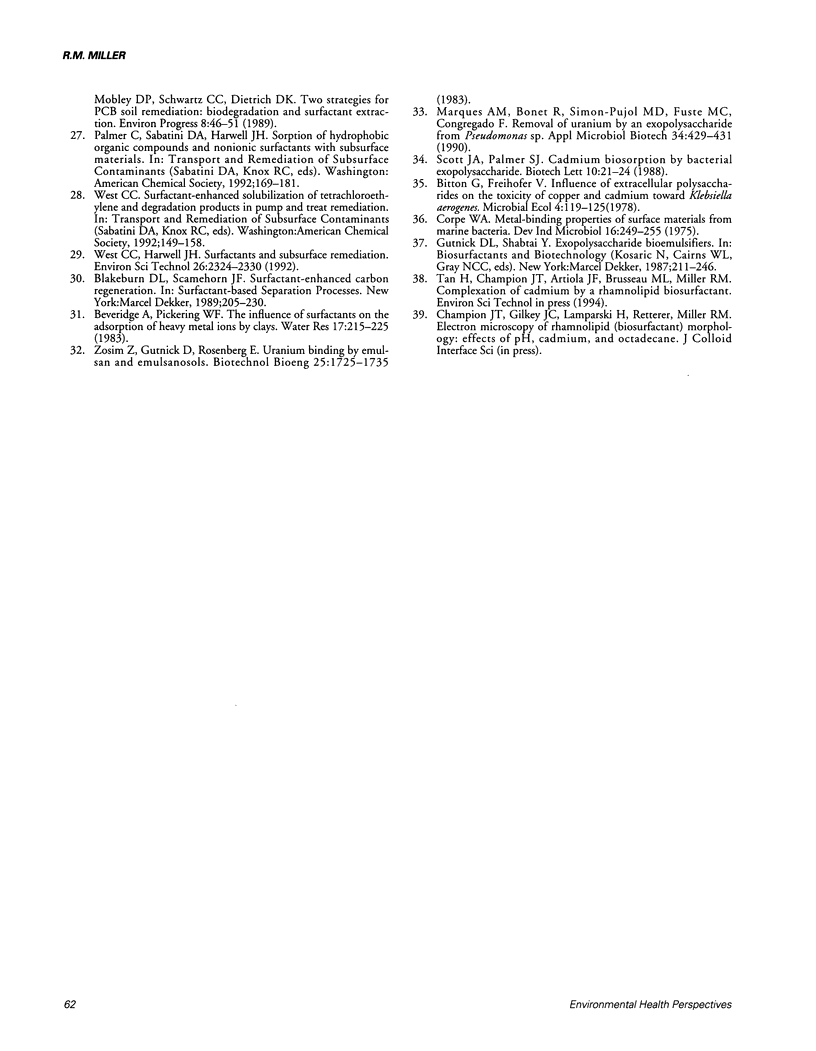Abstract
Bioremediation of metal-contaminated wastestreams has been successfully demonstrated. Normally, whole cells or microbial exopolymers are used to concentrate and/or precipitate metals in the wastestream to aid in metal removal. Analogous remediation of metal-contaminated soils is more complex because microbial cells or large exopolymers do not move freely through the soil. The use of microbially produced surfactants (biosurfactants) is an alternative with potential for remediation of metal-contaminated soils. The distinct advantage of biosurfactants over whole cells or exopolymers is their small size, generally biosurfactant molecular weights are less than 1500. A second advantage is that biosurfactants have a wide variety of chemical structures that may show different metal selectivities and thus, metal removal efficiencies. A review of the literature shows that complexation capacities of several bacterial exopolymers was similar to the complexation capacity of a rhamnolipid biosurfactant produced by Pseudomonas aeruginosa ATCC 9027.
Full text
PDF



Selected References
These references are in PubMed. This may not be the complete list of references from this article.
- Fiechter A. Biosurfactants: moving towards industrial application. Trends Biotechnol. 1992 Jun;10(6):208–217. doi: 10.1016/0167-7799(92)90215-h. [DOI] [PubMed] [Google Scholar]
- Harvey S., Elashvili I., Valdes J. J., Kamely D., Chakrabarty A. M. Enhanced removal of Exxon Valdez spilled oil from Alaskan gravel by a microbial surfactant. Biotechnology (N Y) 1990 Mar;8(3):228–230. doi: 10.1038/nbt0390-228. [DOI] [PubMed] [Google Scholar]
- Macaskie L. E. The application of biotechnology to the treatment of wastes produced from the nuclear fuel cycle: biodegradation and bioaccumulation as a means of treating radionuclide-containing streams. Crit Rev Biotechnol. 1991;11(1):41–112. doi: 10.3109/07388559109069183. [DOI] [PubMed] [Google Scholar]
- Müller P., Dammann H. G., Marinis E., Simon B. Gastroduodenale Verträglichkeit von 30 mg versus 300 mg Acetylsalicylsäure täglich. Eine endoskopisch kontrollierte Doppelblindstudie an gesunden Probanden. Med Klin (Munich) 1990 Jul 15;85(7):429–431. [PubMed] [Google Scholar]
- Zajjc J. E., Panchal C. J. Bio-emulsifiers. CRC Crit Rev Microbiol. 1976 Nov;5(1):39–66. doi: 10.3109/10408417609102309. [DOI] [PubMed] [Google Scholar]


